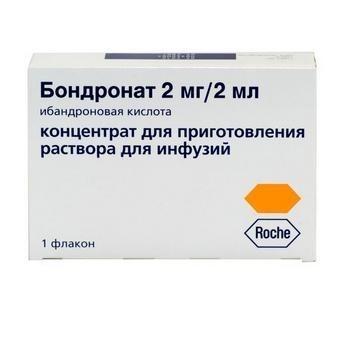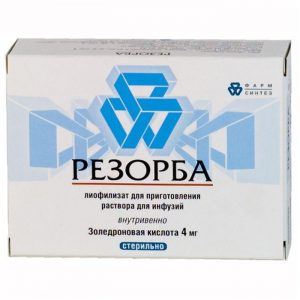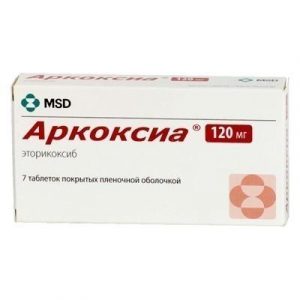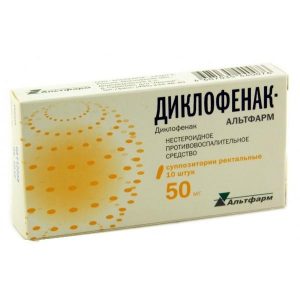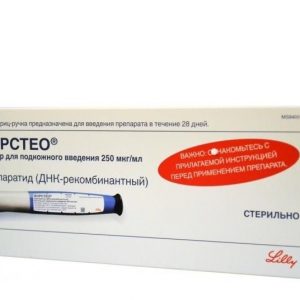Description
Latin name
Bondronat
Release form
Concentrate for solution for infusion.
Packing
Bottle 2 ml.
Indications
Metastatic bone damage to reduce the risk of hypercalcemia, pathological fractures, reduce pain, reduce the need for radiation therapy for pain and the threat of fractures
Hypercalcemia in malignant neoplasms.
Contraindications
hypersensitivity to ibandronic acid or other components of the
drug children (lack of clinical experience)
pregnancy and lactation.
Caution:
Cl creatinine
Hypersensitivity to other
bisphosphonates when taken orally – in combination with NSAIDs.
Use during pregnancy and lactation
Contraindicated.
Composition of
1 ml of concentrate for the preparation of an infusion solution contains:
active ingredient:
ibandronic acid 1 mg, in the form of sodium ibandronate monohydrate 1.125 mg,
excipients:
sodium chloride
sodium acid
acid
acetate acid
acid acetate
acid
acetate injection.
Side effects of
When administered intravenously: fever, asthenia, headache sometimes – flu-like syndrome (fever, chills, ossalgia and myalgia), which in most cases do not require specific treatment and disappear after a few hours or days, hypersensitivity reactions rarely – dyspepsia , diarrhea bronchospasm in patients with aspirin bronchial asthma.
On the part of laboratory indicators: often – decreased calcium excretion by the kidneys, hypophosphatemia, which does not require therapeutic intervention, sometimes – hypocalcemia.
Drug Interaction
Ibandronic acid is excreted only through the kidneys and is not biotransformed. The ibandronic acid excretion pathway does not include any transport systems involved in the excretion of other drugs. Ibandronic acid does not affect the activity of the major isoenzymes of the cytochrome P450 system. In therapeutic concentrations, ibandronic acid is poorly bound to blood plasma proteins, so the possibility of drug interactions caused by the displacement of drugs from the protein binding sites is small.
Bondronate solution is incompatible with calcium-containing solutions.
Products containing calcium and other polyvalent cations (eg aluminum, magnesium, iron), incl. milk and solid foods can interfere with the absorption of the drug, they should be consumed no earlier than 30 minutes after oral administration of Bondronate.
Bisphosphonates and NSAIDs may cause gastrointestinal mucosal irritation.
Ranitidine increases the bioavailability of ibandronic acid by 20% by intravenous administration. No dose adjustment is required when used with H2-histamine receptor blockers or other gastric pH-enhancing drugs.
There is no interaction between Bondronate and tamoxifen, hormone replacement therapy (estrogen therapy) in postmenopausal patients.
Overdose
There is no acute overdose of Bondronate.
Due to the possible toxic effects on the liver and kidneys, it is necessary to monitor the function of these organs. In case of overdose of the drug taken inside, it is possible to increase dyspeptic phenomena, heartburn, development of esophagitis, gastritis, gastrointestinal ulcers.
Treatment: intravenous calcium gluconate, hemodialysis. Milk or antacids should be used to bind the drug taken internally. Due to the risk of irritation of the esophagus, no vomiting can be caused and it is necessary to remain in the upright standing position.
Storage conditions
At a temperature not exceeding 30 ° C. After preparation – at a temperature of 2 8 ° C, for 24 hours.
Expiration
5 years.
Deystvuyuschee
substance ibandronic acid
Conditions of supply of
Pharmacy Prescription
Dosage
L for pharmaceuticals form
infusion solution
F. Hoffmann-La Roche Ltd, Switzerland
